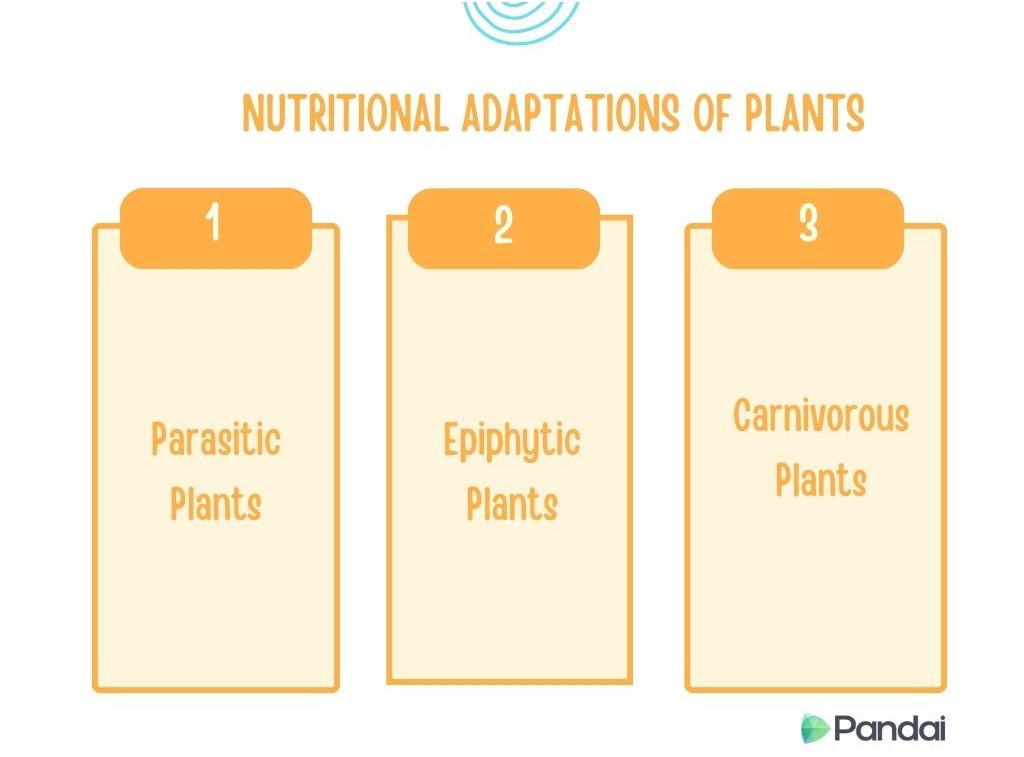| |
| 3.3 |
Diversity in Plant Nutrition |
|
| |
| Definition of Nutrition |
| Process of organisms obtaining energy and nutrients from food for growth, maintenance and repair of damaged tissues.. |
|
| |
| Adaptation of Plants to Obtain Nutrients |
- All plants can carry out photosynthesis except the parasitic plants.
- Some plants also diversify nutrition with photosynthesis.This due to the nutritional adaptations in certain species through evolution.
- There are three plant nutrition other than photosynthesis such as carnivorous plants, parasitic plants and epiphytic plants.
|
|
| |
 |
| |
| Nutritional Adaptations of Plants |
- The parasitic plants have modified roots,called haustoria.
- Haustoria can penetrate into vascular tissue of the host plant to absorb nutrients.
- Example of parasitic plants:
|
- Have modified roots to dry environment and can anchor to the host plant on trunk,branch or other surfaces where they grow.
- Have roots and leaves to absorb mineral and water from rain water.
- The epiphytic plants do not harm the host plants.
- Example of epiphytic plants:
- Asplenium nidus (Bird’s nest fern).
- Bulbophyllum sp. (Orchids).
|
- The carnivorous plants carry out photosynthesis to obtain glucose.
- Grow on hill with nitrogen poor habitat and low soil pH.
- The leaves of carnivorous plants are adapted to trap insects.
- When the insects are trapped,glands on the leaf surface secrete enzymes and digest the insects.
- The digested products,especially amino acids that rich in nitrogen are absorbed and assimilated in the plants.
- Example of carnivorous plants:
- Nepenthes sp. (Pitcher plant).
- Dionaea muscipula (Venus fly trap).
|
|
| |